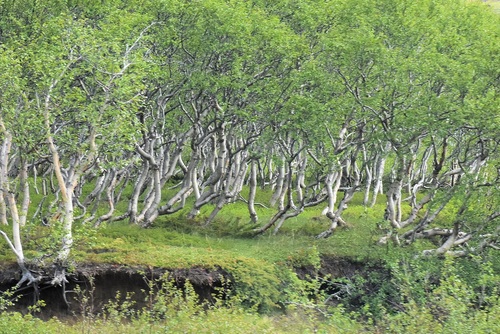Nah, just sufficiently dense, and of hardy varieties, both natives and things from other cold, windy climates (particularly parts of Alaska) - douglas fir, sitka spruce, western hemlock, rowan, various birch, poplar, larch, willow, etc.
It varies, but it's strongest coming from two particular directions. It's in a valley, with my land predominantly near the base of the valley but right before it drops into my canyon, which continues (along with the valley) out to Hvalfjörður and the Atlantic.
Depends on how far back you want to go. Early in the island's history there were even redwoods here! Forests were part of our history for so long that we have meaningful coal depots in places. The environment steadily transitioned to a more traditional northerly conifer forest, but the conifers went extinct during a relatively recent glaciation and were replaced by the pre-settlement birch forests. These covered about a quarter of the island at settlement period. And yes, while forestry helped deplete them, the main reason they were almost entirely lost was sheep. Which - combined with overgrazing - led to heavy erosion.
Modern forestry uses some native species, but more often Alaskan species, because while they're slower to get established, they grow faster and taller once they do. And sheep don't bother them as much (sheep adore birch, willow and aspen leaves). The general attitude is... no tree is going to become "invasive" in this climate, and even if they did, people would be more than glad to cut them down

And basically, "some forest is better than no forest". It's easier to start with the easiest species to grow, and then if desired a later date, you can clear that and replant with native sif you so choose.
Sheep are a real pain for me because - not living on my land yet - I can't constantly chase them out when they get into my land. And it's almost impossible to keep them out, I've practically given up. It's too hard to maintain a fence on the canyon slopes or stop them from crossing or going down the river.








